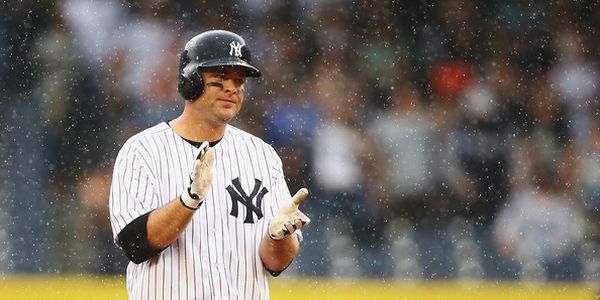2015 Fantasy Baseball: Brian McCann’s Fantasy Outlook


Ask any of Brian McCann’s fantasy owners from the 2014 season what they thought of his performance, and the stank eye you’ll get is the only response you’ll need. He finished the season with 23 homers, which extended his streak of reaching or exceeding 20 homers in a season to seven, but that’s roughly where the positives end. Sure, his 75 RBIs were solid relative to his catching peers, but a .232 average was ghastly. His 14.3% strikeout rate last year was actually below his career mark of 14.5%, but he finished with a batting average a full 40 points below his career mark of .272. What gives? Never fleet of foot, McCann has long been a candidate to post a below league average BABIP, but his .231 mark in 2014 was much worse than his career mark of .283. But chalking his low average up to poor luck would be a mistake, and it seems fitting that I write this piece on a Sunday on which new commissioner Rob Manfred discussed a defensive-shift ban.
Living in New York, Yankees games were often on my television while other games were streaming on my laptop. One thing became clear very early in the season watching Yankees games, opponents were going to take away the right-side of the field on McCann with an extreme shift. It’s easy to see why such an aggressive shift was implemented against the pricey free agent addition to the Yankees when looking at the spray charts available at Brooks Baseball.
That tight cluster of groundballs on the right-side of the infield from 2005-2013 was plenty of motivation to load up that side of the field and force McCann to go the other way. His results on batted balls also provided incentive to force McCann’s hand as his batted ball info below from FanGraphs illustrates.
2005-2013
| Batted Balls | AVG | ISO |
|---|---|---|
| Center | 0.328 | 0.141 |
| Flies | 0.244 | 0.453 |
| Grounders | 0.21 | 0.015 |
| Liners | 0.736 | 0.199 |
| Opposite | 0.286 | 0.119 |
| Pull | 0.355 | 0.357 |
A pull-centric approach worked for McCann throughout much of his career, but defenses wisely tried to make him adjust. As one would guess looking at the final stat line from his 2014 campaign, the adjustment wasn’t smooth for the veteran catcher. In fact, he did little adjusting, and that was largely the problem. Take a look at his spray charts from last season and the results on his batted balls.
2014
| Batted Balls | AVG | ISO |
|---|---|---|
| Center | 0.232 | 0.094 |
| Flies | 0.199 | 0.371 |
| Grounders | 0.131 | 0 |
| Liners | 0.641 | 0.185 |
| Opposite | 0.316 | 0.063 |
| Pull | 0.286 | 0.362 |
His power remained intact when pulling the ball, but his average was down, and his already low batting average on grounders plummeted even further into the abyss. Probably not coincidentally, his average was, however, up when going to the opposite field. That said, with a lowly .063 ISO when going oppo, defenses rightly invited him to hit it to the opposite field. McCann’s struggles against shifts resulted in him being one of the most shifted against batters in baseball last year according to Jeff Zimmerman of RotoGraphs. The table Zimmerman presented in the linked piece shows that McCann struggled mightily against the shift posting a .268 BABIP when defenses didn’t shift, and a .215 BABIP when they did. The shift also took a bite out of his pop as his extra base hits percentage against the shift was 3.9% and 7.1% without the shift.
McCann’s batting average should rebound a bit this season, but think more like his .256 average from the 2013 season than his career .272 average. His home ballpark and lack of erosion in thump make it easy to project another 20-plus homers this year, but when drafting McCann make sure you’re paying for the pop and recognizing the potential drag on average he’ll be. The soon-to-be-31 year old backstop is no longer an elite catching option in fantasy, but I still have him ranked as a startable catcher in 12-team mixed leagues or shallower formats.





